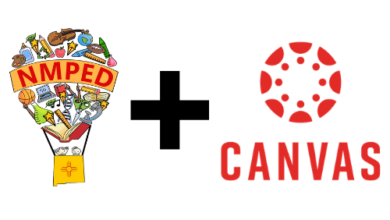Creating career paths for Gen Z to improve retention

A new generation is entering the workforce en masse. Older Gen Zers, now in their early to mid-20s, have finished college and are shopping for long-term employment. A recent report on Gen Z workplace expectations found that, among other job features, Gen Zers prioritize learning opportunities in their job hunt—and a lack of them might be a dealbreaker.
Entering the job market during the Great Resignation, this generation has an edge in employment negotiation—one that came especially early in their careers. In order to keep this new generation of talent, think about reassessing your retention strategy. One of the best places to start? Career pathing.
THE ROLE OF CAREER PATHING
1. KNOW YOUR NEW PEOPLE
According to a recent Deloitte report on Gen Zers entering the workforce, “this generation has an entirely unique perspective on careers and how to define success in life and in the workforce.” In my experience, the majority of new Gen Z rehab therapists simply view their first job as a stepping stone. A survey that focused on the career motivations of Gen Zers showed that 27% expect to stay in their first job for less than a year, and 36% plan to stay for less than two years.
So how can you motivate new hires to stay in your company? From day one, have open discussions with employees about their goals and the opportunities that interest them. This can give you insight into their unique needs and allow you to create a customized career roadmap that’s engaging and interesting to them. You’ll be prepared to guide your new employees and help them maintain a clear vision of their goals.
2. CREATE VISIBLE CAREER PATHS
Intentional, transparent career pathing can give employees a clear picture of their growth opportunities. This helps them see where they are headed and what they are working toward, which—when combined with a customized career roadmap—can increase their likelihood of staying within your company. But, a word of caution: Career pathing is not simply laying out the “rungs” or levels an employee can climb. Truly comprehensive career pathing includes lateral moves and even training opportunities. It takes a holistic view of a person’s potential and interests and identifies how they overlap with your company’s interests.
Encouraging employees to chart their own path can not only boost retention but also innovation. I was reminded of this recently when a WebPT employee showed exceptional innovation within his role. After conducting some internal research, he noticed that WebPT employees were collectively sending 50,000+ emails per month to prospects and customers. Seeing an opportunity to deliver more relevant content into peoples’ inboxes, he set about creating personalized email experiences as part of WebPT’s account-based marketing strategy. The results? Ten thousand impressions from the first campaign, resulting in more webinar signups, more whitepaper and report downloads, and a boost to incoming leads. I believe none of this would have happened without a cultivated culture of innovation and intrapreneurship.
3. PROVIDE DEVELOPMENT OPPORTUNITIES
Help employees make progress on their career path by providing them with the resources to further develop their skills. For example, if they express interest in deepening their knowledge within a niche market, you may choose to set aside a certain amount of funds to help them pursue a specialty certification. Or, you might offer paid training or fully covered continuing education classes or certifications.
Another way to promote career development is by sending employees to national, local or regional conferences or specialty-specific seminars. This is a win-win, since it deepens your employees’ sense of value and improves their skills—which can then transfer into their quality of work.
4. FOCUS ON MENTORSHIP
Nothing beats one-on-one support that helps employees follow their individual career paths. Mentors can open doors for their mentees—or they can help them brainstorm, challenge their ideas, and support their career progress. In a business setting, mentorship might look like scheduling “enrichment hours” during which employees can focus on individual goal setting with you or other members of your leadership team.
To create a structured approach, outline and establish an official mentoring program. Consider assigning new employee mentees to willing senior employee mentors during their first year, with dedicated weekly meetings during their first three months. Or, recruit mentors from specialty or industry associations to meet your team’s needs.
5. INVEST IN PEOPLE
The overwhelming weight of student debt can cause employees to veer off their career path and consider other employment options. When asked how they expect their employer to invest in them, 44% of Gen Z employees said they expect help from their employer with paying off student loans. Another 38% expect tuition reimbursement for a master’s degree or another postgraduate degree. (Of note, only 8% of rehab therapy organizations currently offer some sort of student loan payback option.)
Helping employees get ahead of their student debt can help them stick to their career roadmap while feeling supported and appreciated. In turn, this can boost employee loyalty and retention.
6. REWARD PROGRESS
Career paths have many milestones—and these should be celebrated! Everyone has different preferences for receiving praise. Some people enjoy public recognition in the form of a group email or “Employee of the Month” announcement, while others enjoy tangible rewards like gift cards to a local coffee shop or restaurant. Either way, a kudos and rewards policy doesn’t cost much but can have big retention results.
Retention is key to building a strong company. To keep more of your top talent, evaluate what career pathing currently looks like within your organization. Solicit feedback from current employees on what’s working—and what’s not. Set up regular communication with employees to discuss their career paths and build a custom roadmap together.
At the same time, bolster career pathing by offering career development courses, classes, and mentorship opportunities. And don’t forget—the latest generation is looking for a sense of purpose and autonomy at work, so set them up for success by giving them clear pathways to further their professional goals. This strategy can boost skills and confidence within your practice while helping solidify employee retention.
Dr. Heidi Jannenga, PT, DPT, ATC, is the co-founder and Chief Clinical Officer of WebPT, the leading software solution for rehab therapists.
Recognize your technological breakthrough by applying to this year’s Next Big Things in Tech Awards before the final deadline, July 12.
Sign up for Next Big Things in Tech Awards notifications here.
Read More



